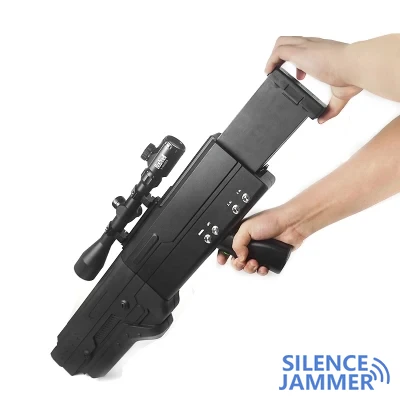The rapid development of drone technology has brought endless possibilities, but also raised a series of security and privacy issues. In order to deal with these problems, drone jamming equipment such as shield-type drone jammers and drone signal jamming guns have emerged. They play an important role in jamming drone signals, but each has advantages and disadvantages in practical applications. Below we will analyze these two devices in detail.

Shield type drone signal jammer
- Advantage:
- Disadvantages:
All-round interference: The shield-type UAV jammer can cover a large range, achieve simultaneous interference with multiple UAVs, and ensure the safety of the airspace.
Precise positioning: Using directional launch technology, the target drone can be accurately locked, improving the accuracy and effectiveness of interference.
Continuous stability: The equipment has stable performance and can continuously emit interference signals, causing the target drone to be out of control for a long time.
Professional design: The equipment has been professionally designed, has high interference effect and stability, and is suitable for various complex environments.
High cost: Manufacturing and maintenance costs are relatively high, requiring large investments and professional maintenance teams.
Complex use: The operation is relatively complex, requires professionals to operate and maintain, and has certain requirements for the use environment.
UAV signal jamming gun
- Advantage:
- Disadvantages:
Portable and flexible: The UAV signal jamming gun is small and portable, can be carried at any time, and is suitable for various scenarios.
Easy to operate: The operation method is intuitive and simple. It can be started and used quickly without complicated settings, and the operation threshold is low.
Affordable: The manufacturing cost is low and the price is relatively affordable, suitable for individual and small group use.
Flexible positioning: It can be operated by hand, which facilitates positioning and interference of target drones, increasing flexibility.
Limited interference range: The interference range is narrow and can only interfere with a single drone and cannot cover a large area.
Poor sustainability: Battery-powered, limited use time, unable to continuously emit interference signals for a long time, affecting the interference effect.
To sum up, shield-type drone jammers and drone signal jamming guns each have their own advantages and disadvantages. Shield-type UAV jammers are suitable for long-term all-round interference in wide areas, but the cost is high and use is relatively complicated; while UAV signal jammers are suitable for portable and flexible temporary jamming needs, but the interference range is limited , poor sustainability. When choosing the right equipment, you need to consider comprehensively based on specific needs and usage scenarios.


